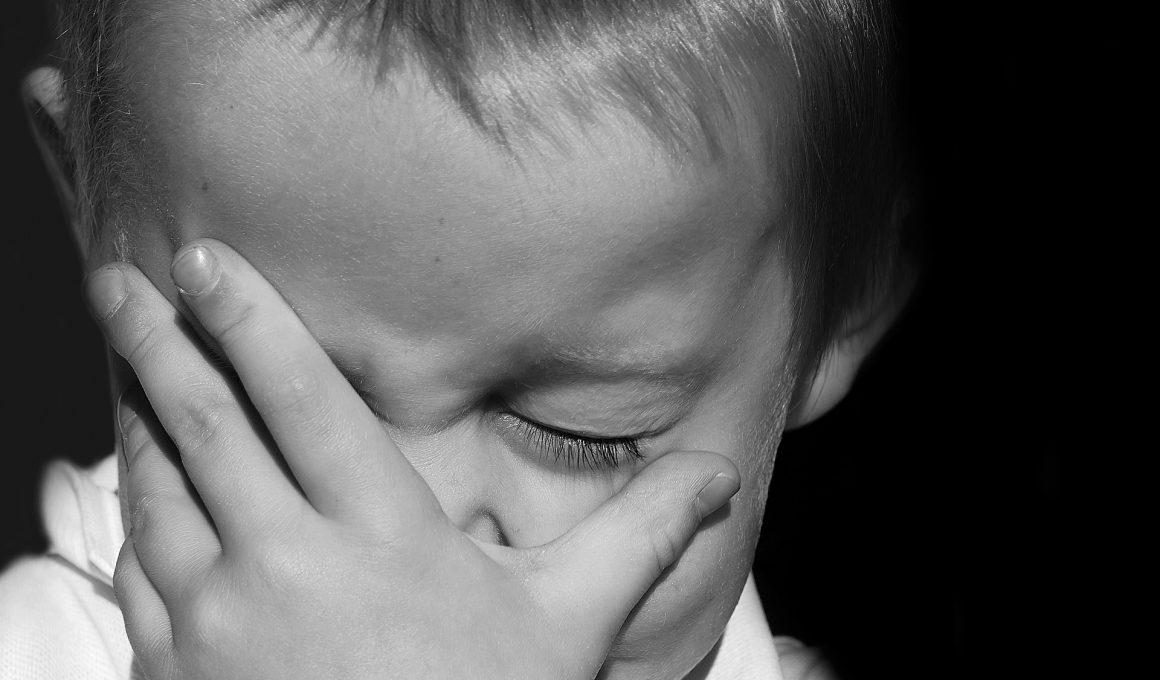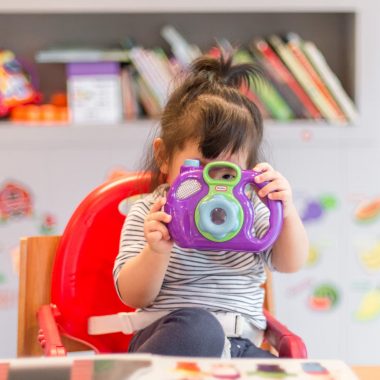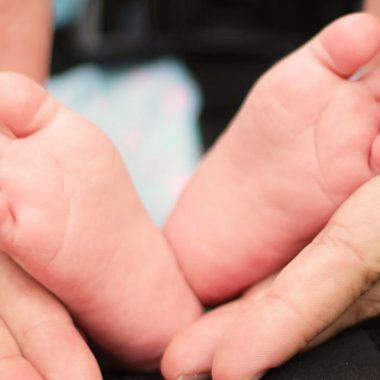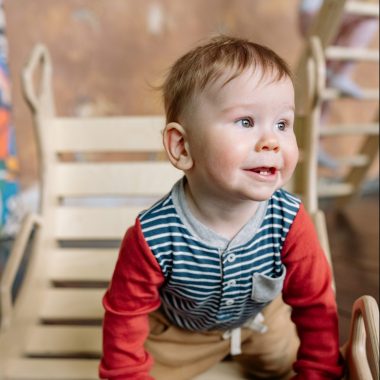Saying “no” to everything. Refusing to wear that jacket when it is freezing outside. Putting on that coat when the weather is blazing hot. Throwing themselves face down on the ground…
Do any of these sound familiar to you?
Regardless of your child’s age, these signs could be a clue that the so-called terrible twos have hit and your child is stepping into a new learning phase.
In our days, parents and pediatricians frequently mentioned the “terrible twos.” It’s often highlighted as a challenging period.
Indeed, it can be…
However, there’s a positive aspect to it: during this time, your child is exploring boundaries, which experts suggest is crucial for distinguishing right from wrong.
Terrible twos is a normal part of development which is often characterized by tantrums, defiant behavior, rapid mood changes, and lots of frustration. It may sometimes seem like a terrible period but it’s a crucial part of growing up. And similar to any phase of adolescence, your child will be looking to you for guidance and support.
Believe us learning what actually sparks this phase will help you and your child. Do keep reading to learn more about the terrible twos.
When do the terrible twos start?
The terrible twos generally begins anywhere from 18 to 30 months of age.
Experts say that most children begin to exhibit increased emotional instability, outbursts, and defiant behavior between the ages of 2 and 3 years.
But there are also some children who may begin to demonstrate terrible two behavior prior to 2 years (like 18 months).
Why do the terrible twos happen?
Although exhausting, the terrible twos is a normal stage in development and a sign that your toddler has hit some major developmental milestones.
Your child is learning new gross motor skills like jumping and climbing, getting better at walking, and developing fine motor skills like stacking blocks and scribbling with a crayon or marker.
However, their verbal skills may be lagging behind their other abilities.
Not being able to express their wants and needs can be frustrating for your child, often leading to outbursts that characterize the terrible twos.
Without an emotional vocabulary to rely on, your child can quickly become frustrated and feel they have no means to express their feelings in any way other than anger or aggression.
This is one reason why the terrible twos happen.
On the other hand, one of the biggest reasons why toddlers have tantrums is because the part of their brain that allows them to think logically isn’t fully developed yet.
The part of the brain that regulates emotion and controls social behavior is the frontal lobe and it is the last part to fully develop. It only begins to mature at the age of 4.
A toddler’s behavior is greatly influenced by their limbic system. This is the part of the brain that controls emotions and impulses. When something upsets a toddler, the limbic system is activated.
If they start having a tantrum, this system is fully activated – meaning that emotions take over your child completely.
As the frontal lobe is not developed enough to help them think clearly about what is upsetting them, there’s no voice in their head to make them stop in their tracks and ask themselves “Is this really a good idea?”
A semi-functional frontal lobe also means that toddlers hardly have any sense of time or any patience.
When they have a strong desire for something or to do something, they feel the need to act upon it immediately.
Why are the twos so terrible?
Terrible twos are full of intellectual and physical growth and development.
Your child is starting to
- walk
- talk
- have opinions
- learn about emotions
- understand how to share and take turns
At this stage, it’s important for your child to have the freedom to explore their surroundings and pursue their own interests on their own terms. That’s an expected and normal part of development.
But since their verbal, physical, and emotional skills aren’t well-developed, your child can easily become frustrated when they fail to communicate or perform a task.
Below are some examples of situations that might be frustrating for your child:
- Your child likely won’t have the language skills to clearly indicate what they want.
- They may not have the patience to wait their turn.
- They might overestimate their hand-eye coordination and struggle with simple tasks such as pouring their own milk or catching a ball, despite their strong desire to do so.
What are the symptoms of the terrible twos?
Every child has a unique personality. This means that terrible twos’ symptoms might differ with every child. But there are some behavioral patterns that might signal to parents that their child is currently in this developmental stage.
Some common behaviors that are hallmarks of this stage include:
- Your child might get frustrated for obvious reasons and not-so-obvious reasons easily. For example, they may ask for water and then break down into tears only because you gave them water in a blue cup instead of a pink one. According to experts, once your child can communicate their needs better, the tantrums will start to fade.
- Your child’s behavior may change quickly from being affectionate and dependent to suddenly becoming aggressive.
- Your child might refuse to do things including eating, changing clothes or diapers, and even refusing to be touched. Even if the “no” doesn’t make sense in the situation (such as when you’re offering them their favorite dessert or toy), your child might tend to overuse this phrase as they test their boundaries and learn the power of the word “no”. So, refusals are common and you should expect plenty of resistance.
- Tantrums. Crying, wailing or throwing themselves on the floor are common elements of a terrible twos temper tantrum, a hallmark of this developmental phase.
- Biting, hitting, slapping and other antisocial behaviors, usually aimed at you and other children they are in contact with, and their sitter or day care teachers, might be seen. This usually depends on the fact that they may not have the words to express themselves and are still developing impulse control.
- Your child might have a desire to do everything by themselves, especially when you are in a hurry.
- Territorial fighting. At this stage, toddlers are learning the concept of “mine,” experts say. Because of that, your child may become very territorial and pick fights with people and even pets who take what’s “theirs,” even when it’s a communal thing like a couch or chair.
Why is two a difficult age?
Two might seem an exhausting and annoying stage of development both for you and your child. But there are some reasons behind that.
To help you better understand why your child is behaving this way, we listed some developmental changes that your 2-year-old is going through:
- Intellectual changes: Your child’s language ability is improving, but they likely understand more than they can express themselves with words. This can lead to emotional outbursts like crying or screaming.
- Social changes: Your child may be showing signs of selfishness or possessiveness, especially when there are other children around. Probably your child may not want to show their toys or may even want a toy that belongs to another child. This is normal at this stage because your child tends to see the world through their own eyes. Your child may also not yet realize that others can get hurt.
- Emotional changes: Mood swings are pretty common during the terrible twos. Your child might be cheerful one moment and upset the next. This is because they are still developing emotionally and are still learning how to control their feelings and actions.
How long do the terrible twos last?
Terrible twos can continue until your child is 3 or 4.
Experts say that the terrible twos behaviors will ease up once your child is better able to understand rules, express what they want more effectively and realize that the wrong color cup doesn’t mean the end of the world.
According to Healthline experts, by the time a child is 4, they usually have enough language and motor development to express themselves, understand instructions, and follow rules set by teachers and caregivers.
Research has found 20 percent of 2-year-olds have one tantrum a day, yet only 10 percent of 4-year-olds do.
Another viewpoint suggests that the duration of the “terrible twos” partly hinges on how you manage the behavior. This implies that devising a strategy to address tantrums could potentially expedite the resolution of this behavior.
Below are two important facts to watch out for.
- Children need consistency. This means everyone, who is responsible for taking care of the child must be on the same page.
- The right strategy might be different for every child since how to deal with the terrible twos depend on your child’s personality as well as your approach to discipline.
Do all children go through terrible twos?
According to experts most young kids, at least in the Western world display some signs of terrible twos.
Please take a look at the following facts from Healthline about terrible twos:
- Kids at this age are developing independence and a sense of self. It’s reasonable to assume their views and expectations won’t always match yours.
- Some children will breeze through the terrible twos with less tantrums than others. This is especially the case if they have advanced language skills, which helps them express themselves more clearly and cut down on frustration.
- Parents and caregivers can also help by avoiding some common meltdown triggers. For example, keeping a child up past their normal bedtime or trying to run errands with a hungry child can trigger mood swings or tantrums.
Tips for parents
When your child is going through a developmental milestone, it’s normal to observe some mood changes. The terrible twos might be a bit longer period. And in this stage of development there are some things you can do to help your child.
The most important thing to keep in mind is trying to prevent common triggers like fatigue, hunger, and frustration which can trigger outbursts:
- Stick to a routine as much as possible: Parents instinctively understand that if a child is overtired, they can get cranky. While you can’t always be home when your child gets sleepy, keeping nap times and bedtimes as consistent as possible will help keep your child’s moods steady. We all know that children love predictability because it makes them feel safe. So try to aim for regular eating, playing and sleeping times.
- Keep snacks handy: Everybody gets cranky when they are tired or hungry. If you must be out with your child during a typical mealtime or snack time, pack healthy food or plan ahead to find a place to order a bite that’s not far from your destination.
- Provide your child with a safe, childproofed environment: Keeping your child’s home environment safe has great importance. If you don’t want them to get into something, put it out of sight, if you can. This will help you not take a treat or fragile object away from a 2-year-old during a tantrum if these items are out of reach to begin with.
- Offer limited choices to your toddler: For example, rather than asking what they want for a snack, ask them to choose between an apple or an orange. Or whether they want to wear the red or blue sweatshirt. This gives your child a sense of control without overwhelming them with too many choices. And the more your child is involved in such decisions, the less frustrated they might be. But make it clear that they have no choice when it comes to safety. This means the car seat isn’t optional.
- Catch them being good and give them props for it: “Thank you for asking me so nicely and using your words,” or “You were so patient when we were waiting in line. Thank you — now we can go play.”
- Try breathing techniques to avoid your own meltdown: When your child is bringing you to the edge of anger, take a moment for distraction: Sit down and breathe deeply at least three times with your hand on your stomach, focusing on the rise and fall of your belly. See if it helps you approach your child’s troublesome behavior with more calm and empathy.
- Be forgiving with yourself: If you lose your temper, focus on how you might better meet a terrible twos moment next time. This stage is hard. Navigating it requires practice and patience with your child and yourself.
Strategies for dealing with a tantrum
Below you will read some strategies that can help you and your child through the terrible twos and tantrums.
- Stay calm. Otherwise your child will feed off your stress. Count to 10 or take a deep breath, whatever helps you to keep calm.
- Attempt to redirect your child’s focus to something else, like an object outside the window, a storybook, or a task that they can assist you with. These diversions have the potential to shift your child’s brief attention span and pique their curiosity.
- Use simple choices to avoid tantrums. For example, if your child doesn’t want dinner, instead of forcing them to eat, which will bring on more resistance, you can ask them to choose to eat the meat or vegetables first. When questions with simple choices are presented, your child’s thinking brain is activated. By accessing your child’s higher brain, you may help them stay in control before the emotional brain takes over.
- Do not reason because they cannot hear. Once a tantrum has started, your child is flooded with emotions. So, trying to reason with them or asking them about their feelings won’t help. You may end up upsetting them and arousing their emotions even more.
- Holding or hugging can activate your child’s body’s calming system and trigger another feel-good chemical (oxytocin) that can regulate their emotions. Make sure you stay calm before doing this. Otherwise, if your own system is not calm, you may make your child more stressed.
- Teach your child communication skills. Teach your child to use words instead of throwing things to express emotions.
- Don’t spank or hit, and try to avoid yelling. You want to model nonviolent behavior for your child.
- Don’t reward the behavior by giving your child a treat or something that they are demanding.
- If you are in public, take them aside without discussion or fuss and wait until they calm down.
- If your child calms down and the behavior improves, don’t make a point of recounting the bad behavior or discussing the problem in detail. (They’re only 2, after all.) Instead, praise the good behavior—not with gifts but with words and affection.
- Don’t give in. Set your limits and be consistent. If that means your child has a full-blown tantrum in the grocery store because you won’t buy a candy bar, simply remove your child from the situation and wait until things calm down. You won’t be the first parent to leave a full cart.
References: healthline.com, parents.com, clevelandclinic.org, thebump.com, webmd.com, verywellfamily.com, whattoexpect.com, parentingforbrain.com










